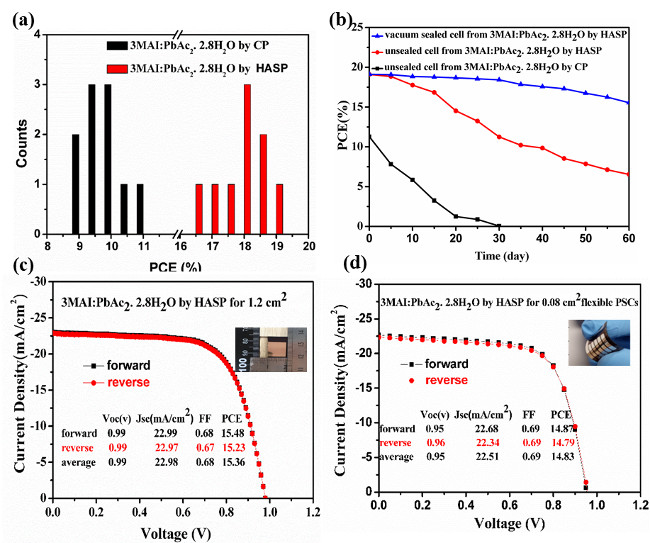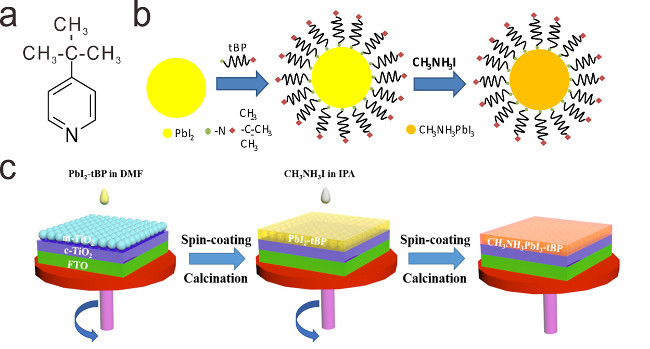On the eve of this new semester, a piece of good news about the scientific efforts of the Southern University of Science and Technology was brought to us: 91 projects from our university were on the list of projects funded by the National Natural Science Foundation of China in 2017, representing a funding rate of 38.24%, 17.15% higher than the national average rate. This marks the latest achievement among a string of fruitful results made only a few years after the university’s founding. Characterized by “research, innovation, and entrepreneurship”, our university has been striving to create world-class academic achievements and promote the application of science and technology to contribute theoretical and practical innovations to the country’s economic and social development.
We have successively launched a series of reports named “Focusing on Advanced Science and Technology in Southern University of Science and Technology” to allow readers to gain a better understanding of the scientific achievements of our university, as well as popularize scientific knowledge, provide scientific researchers with dynamic information for cross-cooperation and help guide students to choose research fields. We will share research results and progress of some of the research teams led by our professors here at the university.
Solar energy is inexhaustible. Large-scale use of clean and renewable solar energy is of significant importance to optimize the energy consumption structure, reduce environmental pollution and relieve the global greenhouse effect. Therefore, developing a cheaper and more efficient photovoltaic technology is an constant topic of solar energy utilization, which concerns the extent to which solar energy can replace fossil fuels in the future.
The research group of Professor Baomin Xu from the Department of Materials Science and Engineering has made outstanding achievements in this field. The team were actively involved in researching key technology for large-scale preparations of flexible perovskite solar cells. They have established a sound research platform for development of new materials and advanced device preparation process essential to application and research of perovskite thin film solar cells, and achieved a series of preliminary results.
A New Generation of Solar Cell, Leading in a New Direction of Green and Renewable Energy
As the most important part of PV technology, the solar cell can convert the solar energy into electric energy directly. Exploring new highly efficient and low-cost solar cell materials and technologies is the key and main focus in the solar cell field. The perovskite solar cell becomes one of the important directions, and stabilities of key materials, high performance devices, low-cost large-scale preparation technologies and flexible applications are promising aspects in the research on perovskite solar cell.
Since Professor Miyasaka in Japan used perovskite for the solar cell for the first time in 2009, Snaith research group from Britain and Park research group from South Korea have used FAPbI3 (Formamidinium Lead Iodide) for planar and mesoporous structures successively, achieving cell efficiencies of 14.2% and 16.01% respectively. Compared with MAPbI3 (Methylammonium Lead Iodide), FAPbI3 showed a better high temperature resistance capability, enjoying more advantages in the future practical applications. Additionally, Park’s group firstly reported that moisture resistance and illuminating capability of the cell could be improved significantly by replacing the ammonia carbamate cations of 10% with caesium. Subsequently, Swiss scientists Grätzel at el reported mixed, MA, FA and caesium perovskite cells, with the latest cell efficiency reaching up to 22.1% and certified. By replacing FA with caesium partially, Snaith et al developed a bromine-based perovskite cell which can withstand illumination and high temperature for a longer time and its bandgap is more suitable for manufacturing the highly efficient perovskite/silicon-based laminated cell.
In terms of research on the flexible perovskite cell, the research group of the University of California has prepared an Ag grid/PEDOT:PSS PH1000 (a conducting polymer) composite electrode by applying NIL to the polyethylene terephthalate (PET) substrate, based on a flexible perovskite cell with an IPCE of 14% which was achieved, and the device is found to be very flexible. However, the device still has a stability problem since both the flexible electrode and the HTL include PEDOT:PSS. Domestic scientific researchers have also made significant achievements in various aspects of the perovskite solar cell. By adopting a unique interface modification method, North China Electric Power University has achieved a certified cell efficiency of up to 19.16% and has also conducted calculations and performance predictions to the structures of multiple perovskite materials, mastering the association mechanisms between band structures of these materials and their stabilities. Shaanxi Normal University has developed a low-temperature deposit process for the excellent TiO2 electron transport layer, achieving a flexible cell efficiency of 16.09%.
Taking the industrialization of the new flexible solar cell as a main objective, realizing the large-scale, low-cost full-print preparation of flexible perovskite solar cells as a short-term goal of the program and developing the “plug & paste-and-play” flexible high-performance perovskite solar cell generating thin film as a mid-term goal, Baomin Xu’s team has overturned the traditional ideas on the applications of PV cells by developing a PV application that can be installed and used by anyone, at any place and at any time. The product will be used as a mobile power supply for mobile devices, wearable electronics, field equipment, family cars and other commercial traffic tools. Additionally, it will also be used for household PV generation and BMPV generation. The market scale in China alone is estimated to be over 1000 billion Yuan, and even much larger on the global market. Therefore, its successful implementation perhaps could trigger a global energy revolution.
In the field of solar PV cell, Professor Xu led the technology research and development of preparing silver electrode gridlines of C-Si solar cell by “Co-extrusion” printing in PARC Research Center. This technology has the potential to replace currently general silk-screen printing. Without any additional equipment cost and process steps, it can increase the photoelectric conversion efficiency by more than 20% by altering the ratio of height to width of the silver electrode gridline. The technology has been transferred to a European major C-Si solar cell manufacturer and realized commercialized production.
In coopoeration with Solar World Industries America, the largest solar cell manufacturer in the U.S., Professor Xu also developed a metalizing technology of contactless printing and real-time adjustment of line width, and solved the difficulties in precise positioning of metal gridlines under high production and high throughput. This technology has been applied to the production of high efficiency PERC-MWT cell.
Moreover, Professor Xu directed the research of low concentration technology in the PARC Center. This technology developed a low-cost special optical thin-film as a substitute for the C-Si wafer. Thus, while the generating efficiency of solar components is kept unchanged, dosage of the C-Si wafer was quartered, resulting in the component’s cost dropping by more than 30%. This technology has been transferred to an Asian major C-Si solar cell manufacturer.
Based on previous research, Professor Xu’s laboratory has developed a series of new hole transport material, achieving spin-coating preparation of undoped hole transport layer and applying it to the perovskite solar cell, as well as photoelectric conversion efficiency of devices up to 17.3%.
The laboratory adopted a pioneering heat-assisted spin coating process to achieve rapid perovskite layer crystallization saving 90% of the time compared to the traditional process. It is beneficial to the production of high-throughput thin-film solar cells in the print preparation. If this process is used, the device efficiency will exceed 19% and be more than 15% even after 2 months, demonstrating the favorable environmental stability. The efficiency of large area and flexible devices is more than 15% (Fig. 1).
 Fig. 1 Device performance fabricated by the new HASP (Heat-assisted Spin Coating) process
Fig. 1 Device performance fabricated by the new HASP (Heat-assisted Spin Coating) process
The laboratory modified the perovskite light absorption layer by using small molecules t-BP (4-tert-Butyl pyridine) to enhance its anti-water and –oxygen abilities. As a result, high-performance battery components can be prepared in a highly humid environment. The battery efficiency can still reach approximately 10% with a humidity level of 70%. J. Phys. Chem. C, 121(2017), 6546−6553 (Fig. 2)

Fig. 2 Schematic diagram of preparing perovskite layer
The laboratory has developed a new type of inorganic quantum dots, prepared the inorganic quantum dot modified perovskite solar cell, and found that its performance and stability have been improved significantly (Fig. 3).

Fig. 3 Interface-modified perovskite solar cell device introduced by quantum dot
The objective of Xu’s team is to realize the roll-to-roll all-printing preparation of flexible perovskite solar cell at a low cost, and later based on this, develop inexpensive, high-performance “Plug, Paste, and Play” flexible perovskite solar cell generating thin film series. The photoelectric conversion efficiency of the cell is between 10% and 15%, with service life of 3-10 years according to applications. These flexible perovskite solar cell generating thin films would be widely applied to cell phone, laptop and field equipment as mobile supplementary power supplies, to automobile as mobile generating power supply replacing current solar film, and to the building as BMPV substituting for glass film.
These applications have a huge market. Taking the automotive solar film as example, there are more than 200 million motor vehicles in China, approximately 107 million of which are private cars and that number will increase to about 150 million by 2020. Assuming that the solar film with an area of 3 square meters is required for each car, the automotive solar film has a market scale potential of up to 90 billion yuan. Similarly, the building area in China was 50 billion square meters in 2014 and would be near 90 billion square meters by 2020. Window areas are generally 20% of the building area. If 20% of the window area has the solar film for electricity generation, its market scale is 20 billion yuan. Taking into account the building surface without glass but available for the solar energy photovoltaic power, the whole market scale may be more than 1,000 billion yuan. Based on 2,000 hours of annual average sunshine, the solar thin film on the building glass can generate 720 billion kWh of electricity (if the efficiency of the solar cell thin-film is taken as 10%), saving annual electricity costs of about 430 billion yuan, as well as 300 million tons of coal, and 720 million tons of carbon emissions. Consequently, carbon emission in China may be reduced by approximate 8%.
Proofread By
Photo By